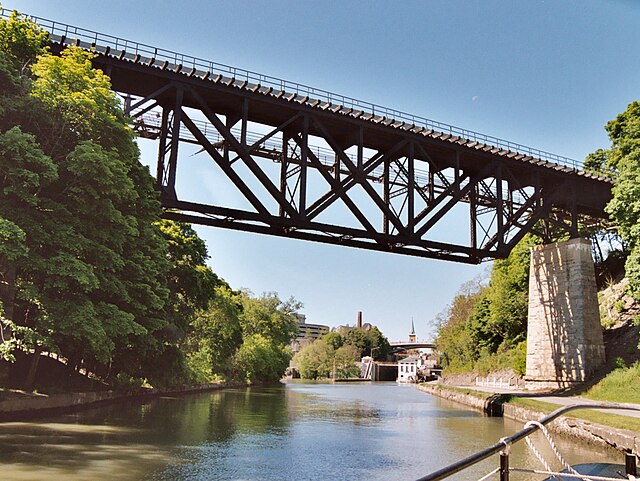A Howe truss is a truss bridge consisting of chords, verticals, and diagonals whose vertical members are in tension and whose diagonal members are in compression. The Howe truss was invented by William Howe in 1840, and was widely used as a bridge in the mid to late 1800s.
The Park's Gap Bridge, Berkeley County, West Virginia, built in 1892
William Howe
Vertical posts pass through diagonal braces and an angle block to reach the lower chord of the Jay Bridge in Essex County, New York
One type of angle block for use in a Howe truss bridge
A truss bridge is a bridge whose load-bearing superstructure is composed of a truss, a structure of connected elements, usually forming triangular units. The connected elements, typically straight, may be stressed from tension, compression, or sometimes both in response to dynamic loads. There are several types of truss bridges, including some with simple designs that were among the first bridges designed in the 19th and early 20th centuries. A truss bridge is economical to construct primarily because it uses materials efficiently.
A truss bridge operated by Southern Pacific Railroad in Contra Costa County, California converted to pedestrian use and pipeline support
Pratt through truss of the former Seaboard Air Line Railway, located near Willow, Florida; abandoned since the mid-1980s
Deck truss railroad bridge over the Erie Canal in Lockport, New York
The four span through truss General Hertzog Bridge over the Orange River at Aliwal North carries vehicular traffic








